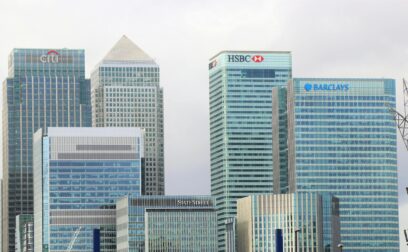TABLE OF CONTENTS
Hospitality is big business in Australia. There are nearly 30,000 restaurants across the nation, plus thousands more bars and cafes.
Page written by Chris Godfrey. Last reviewed on April 12, 2024. Next review due July 1, 2025.


Every one of these establishments needs specialised equipment to operate. However, in an industry where margins are always tight, paying for the tools and machines they need can have a major impact on a restaurant’s valuable working capital – which is why so many Australian eateries choose to finance the equipment they need. Pay over time at the lowest cost, secure the best tax deductions, choose to buy or return the equipment when the contract ends.
Take the strain off cashflow as you feed your hunger for success – give your restaurant the equipment it needs with a low or no deposit restaurant equipment finance.
No matter if it’s a full-service restaurant, a fast-food eatery, bar, pub, café, even a food truck, almost everything a hospitality business needs to prepare, make, and serve food and drink to paying customers can be classed as restaurant equipment.
Numerous retailers and suppliers provide their own financing programs tailored for acquiring hospitality equipment. These schemes permit you to borrow funds without incurring interest for a span ranging from six months to two years. However, they often stipulate a minimum spending threshold, typically around $500, and you might be required to make an initial deposit, which could amount to as much as 50% of the item’s value. Repayment options are usually flexible, allowing you to select from a variety of plans to ensure that your monthly payments remain manageable.
It’s important to exercise caution, as some scenarios might involve interest charges. Always exercise due diligence by carefully reviewing the terms and conditions prior to committing to any arrangement. If interest is applicable, opting for an extended repayment period will reduce your monthly payments, but it will also elevate the overall interest accrued.
Additionally, it’s wise to ascertain whether early repayment fees are applicable should you wish to settle the debt ahead of schedule. Keep in mind that a solid credit history is generally necessary to qualify for these financing options.
While comparing available choices, you might encounter terms like ‘0% finance’ or ‘pay monthly.’ Another term you might come across is ‘buy now pay later’ (BNPL). These BNPL plans have gained popularity due to their feature of allowing you to distribute payments over several months without incurring interest. The duration of these plans, which could be 6, 12, 24, or 36 months, varies based on the provider’s terms.
Paying for restaurant equipment out of valuable working capital does not make business sense – which is why thousands of Australian restaurants, cafes and bars secure the tools and machinery they need with a flexible, cost-effective, restaurant equipment finance. This type of financing offers a host of unique benefits:
Preserving valuable working capital is the number one priority for many Australian restaurants and bars. A low or no deposit restaurant equipment finance gives business owners fast and affordable access to the equipment they need without impacting cashflow. Ideal for start-ups and franchise operations, leasing lets you pay over time to match your budget, and often, on terms to suit the growth plans and seasonal rhythm of your restaurant.
It is important to note, that financing restaurant equipment also has the following potential drawbacks:
Overall Cost: Financing often comes with interest or fees, increasing the total cost of the equipment over time. This can make the equipment more expensive in the long run compared to purchasing it outright.
Interest Rates: The interest rates on equipment financing can vary and might be higher than what you’d get for other forms of financing or loans.
Commitment: Once you commit to a financing agreement, you’re obligated to make regular payments over the agreed-upon term, regardless of changes in your business’s financial situation.
Impact on Cash Flow: While financing can improve short-term cash flow, it involves consistent monthly payments that can strain your budget, particularly during slower months.
Depreciation: Many restaurant equipment items depreciate quickly in value. If you’re financing over a longer term, you might end up paying for equipment that has lost a significant portion of its value.
Leasing can be the most tax-efficient way to secure tools and machinery for your restaurant. Unlike standard instalment loans, where only paid interest is fully tax-deductible, your entire lease payments (not just the interest), may be deducted as an expense. This is a significant tax write-off that can simultaneously lower your tax bill and reduce the overall cost of your restaurant equipment.
Some restaurant equipment may only be needed for short periods, (such as a new restaurant that is uncertain of the level of customers it will attract), which means buying with cash or entering into a long-term instalment loan can be a bad idea. Instead, leasing can offer business owners short-term equipment hire, with an option to extend the lease as necessary, giving them the best of both worlds. Lease the equipment you need for only as long as you need it.
There are two main types of restaurant equipment lease. Both offer the option to buy the equipment at contract end:
Operating lease: You pay a fixed monthly sum for use of the equipment and for a set period of time (12, 24, 36 months etc). When the contract expires, you may either buy the equipment for its fair-market value, extend the rental for a further 12 months or more, or you can simply return the tools and machinery to the lessor (the equipment provider) with nothing more to pay. (Subject to any usage limitations).
Capital lease: You also pay a fixed monthly sum for a set period, but you automatically buy the equipment for a pre-agreed ‘buyout fee’ (typically only $1) at contract end. When the contract expires and you have paid the buyout fee, the equipment is yours with nothing more to pay.
Restaurant equipment leases are a great way to secure the tools and machinery your hospitality business needs without impacting cashflow, and they come with many unique advantages. However, leasing also has some disadvantages that business owners must be aware of:
A lease is a long-term rental agreement, with no ownership by the lessee (you). This means you cannot build any equity in the equipment unless you opt to buy at the end of the contract. If you choose to return the equipment, you will receive no share of its residual value.
Because they can present an increased risk and the equipment may suffer severe wear and tear during the lease period, lenders will often charge a higher interest rate on leases compared to standard instalment loans.
Restaurant equipment leases are fixed-term agreements, usually with no option for an early exit. If you decide you no longer want the equipment and wish to get out of the lease, you may be liable for an early termination fee.
Restaurant equipment finance is available to almost every type of Australian hospitality business. No matter if you’re a sole trader, a small SME, a mid-size or large company, restaurant, café, or bar, or even if you have weak credit and have been turned down elsewhere, there’s a restaurant equipment finance for you.
Restaurant equipment finance is a specialist financial area with differing rules of application and requiring deep knowledge of this business sector from the lender. Australian restaurants, bars, and cafes seeking funding may find themselves forever searching and making applications to lender after lender without success. The delays this can create could cause them to lose revenue and leave their business vulnerable to competition. Instead, working with a broker, who can access restaurant equipment finance from a wide range of lenders is a better way to go. No more cold calls and endless demands for information, just tell us what you need and leave the rest to us.
Give your hospitality business the equipment it needs to grow. Register with Swoop to find the best rates, the best terms and the best restaurant equipment finance today.
Written by
Chris is a freelance copywriter and content creator. He has been active in the marketing, advertising, and publishing industries for more than twenty-five years. Writing for Barclays Bank, Metro Bank, Wells Fargo, ABN Amro, Quidco, Legal and General, Inshur Zego, AIG, Met Life, State Farm, Direct Line, insurers and pension funds, his words have appeared online and in print to inform, entertain and explain the complex world of consumer and business finance and insurance.
Swoop promise
At Swoop we want to make it easy for SMEs to understand the sometimes overwhelming world of business finance and insurance. Our goal is simple – to distill complex topics, unravel jargon, offer transparent and impartial information, and empower businesses to make smart financial decisions with confidence.
Find out more about Swoop’s editorial principles by reading our editorial policy.
Join the 70,000+ businesses just like yours getting the Swoop newsletter.
Free. No spam. Opt out whenever you like.
Suite 42, 4th Floor, Oriel Chambers, 14 Water Street, Liverpool, L2 8TD
View in Google MapsKingfisher Way, Silverlink Business Park, Newcastle upon Tyne, NE28 9NX, UK
View in Google MapsSuite 105A, Airivo, 18 Bennetts Hill, Birmingham, B2 5QJ
View in Google MapsAberystwyth Innovation and Enterprise Campus
Gogerddan Campus
Aberystwyth University
Ceredigion
SY23 3EE
Dogpatch Labs, The CHQ Building, Custom House Quay, Dublin, Ireland
View in Google MapsSuite 801, Level 8, 84 Pitt Street, Sydney, NSW 2000, Australia
View in Google Maps43 W 23rd St, New York, NY 10010, United States
View in Google Maps21 Dreyer Street, Cape Town, South Africa, 7708
View in Google MapsClever finance tips and the latest news
delivered to your inbox, every week
Join the 70,000+ businesses just like yours getting the Swoop newsletter. Free. No spam. Opt out whenever you like.



